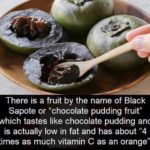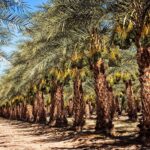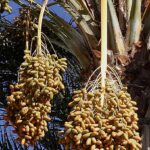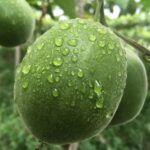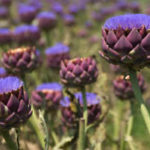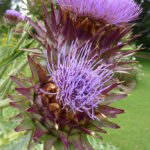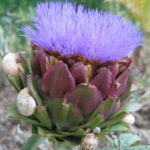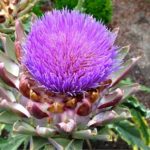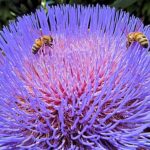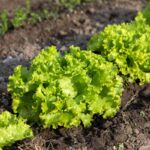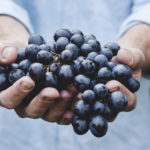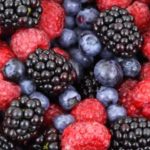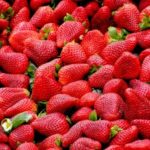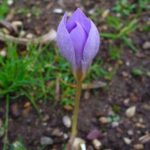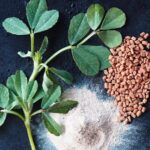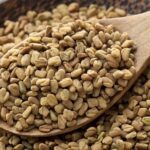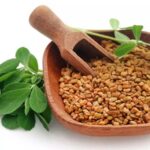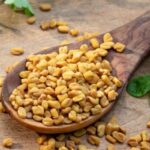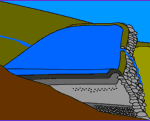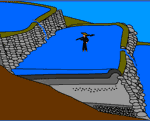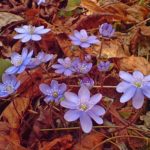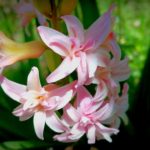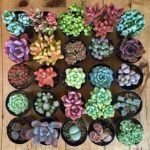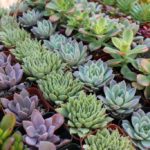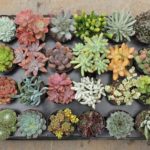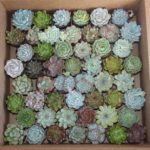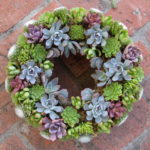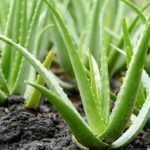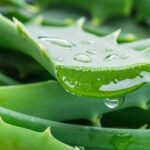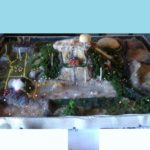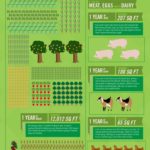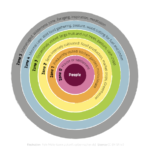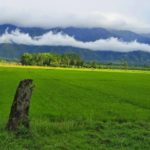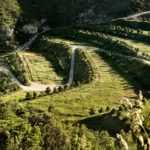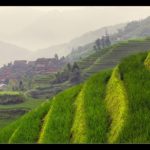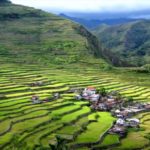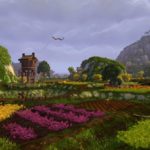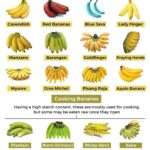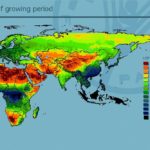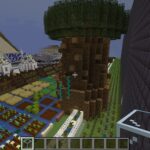Most of the food in Inisfree is grown here (and the rest comes from our backyards and rooftops).
–
Table of Contents:
- Introduction
- Dimensions & Layout
- Water Table Regulation Silos
- What We Grow (parent category for several of the following)
- Fruits
- Vegetables
- Nuts
- Berries
- Herbs & Spices
- Syrups
- Grains
- Seeds
- Landscaping
- Others
- Diversity Against Disease
- Who It Feeds
- When We Grow
- How We Grow
- History
- Additional Notes
- Relevant Holidays
- Novels Excerpt
- Location & Design/Layout (Image-albums Begin)
- Appearance
- Themed Clothing
- Memes
- 2022 Update: Direct Sunlight and Shadow
- 2023 Update: 2022 Scale-model in Minecraft
–
Introduction:
“An army marches on its stomach,” stated wisely Emperor Napoléon Bonaparte, and Inisfree has the finest foods in all the lands –in all the world.
This section of Inisfree, sometimes called a ‘region’, is devoted to growing all of the plants which result in crops useful to the Inisfreeans. This includes both crops edible and those used in construction and for other purposes, such as oils and extracts. This area, commonly called ‘The Cropland’ or just ‘Cropland’, consists of four main sub-divisions:
We also grow crops for food and other purposes in many other places throughout our home-city here, as well as on all of our larger ships.
–
Dimensions & Layout:
The wetland plain (including all four sections / micro-climates, from higher and drier… to lowest and wettest) measures ~3,960′ (from the G.A.H. all the way over to the low mountain-range separating the Cropland from the [DS & CP LZ] side of our Main Lake‘s beach) by ~10,560′ (2 miles long; from the slope of the low mountain-range connecting to the Mountain on Corinthians neighborhood… to the far side of this largest farm of ours; where our Luxury Barn is). That is 41,817,600 sq.ft. of arable land; 960 acres. On the other side of our Luxury Barn is a ~3,960′ x ~3,960′ area where we grow things in our biodomes; it adds another 15,681,600 sq.ft. of area; 360 acres. (Together, our whole Cropland area is ~1,320 acres.)
~Half our crops are grown in hydroponic and aeroponic grow-rooms in shipping-container annexes of our silos below the surface; even though these silos are spread out underground, and only growing crops in some of the annexes of some of the silos, they are spread out across a 10×10 mile area (100 square miles).
The other ~half are grown on our surface terrain’s designated farming areas; this Cropland + all the rooftop gardens, front-yard gardens, backyard gardens, indoor gardens, porch and balcony crops troughs, and neighborhood greenbelts.
Crops grown on the mountain slopes here, which make up three sides of this region’s perimeter, produce ~5% of what we harvest to eat or otherwise use.
Each crop (species of plant producing something edible) here has at least a few of our Cropland’s 1,320 acres, and we keep like-crops/plants together, separated only by irrigation creeks/streams and by rows of pollinator-attractor plants, such as lavender and non-edible / for-landscaping flowers. The 95 categories of crops listed below, averaged out across our 1,320 acres, gives each category ~14 acres. Using apple trees as an example, the apple trees are allotted 14 acres total, of the surface of our Cropland, with different species/flavors of apples allotted even portions of those 14 acres.
–
Water Table Regulation Silos:
Many of the subterranean silos beneath this region of Inisfree have ballasts and other devices which constantly monitor and regulate the water-table of the area directly above and immediately adjacent them. This ensures that no matter what the Inisfreean weather is like, and no matter how much rainfall is coming down, nor how much Spring thaw is producing run-off, the watershed of this section of the city is always perfectly controlled and kept at the precise levels which the various crops growing upon it benefit most from.
–
What We Grow:
Fruits
- Apples (Red Delicious)
- Avocados
- Bananas (many kinds, such as plantains)
- Black Sapote (Diospyros nigra, a species/race of Persimmon)
- Dates (Phoenix dactylifera)
- Dragonfruit
- Figs
- Grapefruits (pink and red)
- Jackfruit
- Kiwis
- Lemons
- Limes
- Lychee
- Monkfruit (Siraitia grosvenorii; Luo Han Guo)
- Nectarines
- Okra
- Olives (dark brown, green, red)
- Oranges
- Peaches
- Pears (red, white)
- Persimmon; a winter-season fruit
- Pineapples
- Plums
- Tangerines
- Tomatoes (dozens of kinds)
- Watermelons
–
–
Vegetables
- Artichokes
- Asparagus (green, purple, white)
- Bamboo
- Beans (Black, Edamame, Garbanzo/Chickpea, Green, Kidney, Lima, Navy, Pinto, Soy, White (including Giant/Gigante))
- Broccoli
- Brussels Sprouts
- Cabbage (green, orange, purple, white)
- Capers
- Carrots
- Cauliflower
- Cucumbers
- Kale
- Leeks
- Lettuce (Iceberg)
- Onions (pearl, purple, white)
- Peas (Snap, Snow, Tamarind)
- Pumpkins
- Shallots
- Spinach
- Squash (acorn, butternut, green, yellow)
- Sweet Potatoes
- Yams
- Zucchini
Nuts
- Almonds
- Cashews
- Coconuts
- Hazelnuts
- Macadamia Nuts
- Pecans
- Pine Nuts
- Pistachios
- Walnuts
Berries (with the best Driscoll’s flavor profiles)
- Blackberries
- Blueberries
- Currants (black, etc.)
- Grapes (green, purple, white)
- Raspberries (black (for Talenti gelato), golden, red)
- Strawberries
Herbs & Spices
- Ajwain, carom seeds (Trachyspermum ammi) (Pakistan, South Asia, India, Afghanistan, Iran, Egypt, Eritrea, & Ethiopia)
- Alexanders (Smyrnium olusatrum)
- Alkanet (Alkanna tinctoria), for red color
- Alligator pepper, mbongo spice (mbongochobi), hepper pepper (Aframomum danielli, A. citratum, A. exscapum) (West Africa)
- Allspice (Pimenta dioica)
- Angelica (Angelica archangelica)
- Anise (Pimpinella anisum)
- Aniseed myrtle (Syzygium anisatum) (Australia)
- Annatto (Bixa orellana)
- Artemisia (Artemisia spp.)
- Asafoetida (Ferula assafoetida)
- Avens (Geum urbanum)
- Avocado leaf (Persea americana)
- Barberry (Berberis vulgaris and other Berberis spp.)
- Basil, sweet (Ocimum basilicum)
- Basil, Holy (Ocimum tenuiflorum)
- Basil, lemon (Ocimum × citriodorum)
- Basil, Thai (O. basilicum var. thyrsiflora)
- Bay leaf (Laurus nobilis)
- Bay leaf, Indian; tejpat, malabathrum (Cinnamomum tamala)
- Bay leaf, Indonesian; Indonesian laurel, Salam leaf, daun salam (Syzygium polyanthum)
- Bay leaf, Mexican; laurél (Litsea glaucescens)
- Bay leaf, West Indian (Pimenta racemosa)
- Blue fenugreek, blue melilot (Trigonella caerulea)
- Boldo (Peumus boldus)
- Borage (Borago officinalis)
- California bay laurel (Umbellularia californica)
- Cao guo, Chinese black cardamom (Lanxangia tsaoko) (China)
- Caper (Capparis spinosa)
- Caraway (Carum carvi)
- Cardamom (Elettaria cardamomum)
- Cardamom, black; badi ilaichi (Amomum subulatum, Amomum costatum) (India, Pakistan)
- Cassia (Cinnamomum aromaticum)
- Cayenne pepper (Capsicum annuum)
- Celery leaf (Apium graveolens)
- Celery seed (Apium graveolens)
- Chervil (Anthriscus cerefolium)
- Chicory (Cichorium intybus)
- Chili pepper (Capsicum spp.)
- Chironji, charoli (Buchanania lanzan)
- Chives (Allium schoenoprasum)
- Cicely, sweet cicely (Myrrhis odorata)
- Cilantro, coriander greens, coriander herb, Chinese parsley (Coriandrum sativum)
- Cinnamon, Indonesian (Cinnamomum burmannii, Cassia vera)
- Cinnamon, Saigon or Vietnamese (Cinnamomum loureiroi)
- Cinnamon, true or Ceylon (Cinnamomum verum, C. zeylanicum)
- Cinnamon, white (Canella winterana)
- Cinnamon myrtle (Backhousia myrtifolia) (Australia)
- Clary, Clary sage (Salvia sclarea)
- Clove (Syzygium aromaticum)
- Coriander seed (Coriandrum sativum)
- Coriander, Vietnamese (Persicaria odorata)
- Costmary (Tanacetum balsamita)
- Cubeb pepper (Piper cubeba)
- Culantro, culangot, long coriander, recao (Eryngium foetidum)
- Cumin (Cuminum cyminum)
- Curry leaf (Murraya koenigii)
- Curry plant (Helichrysum italicum)
- Cyperus articulatus
- Dill herb or weed (Anethum graveolens)
- Dill seed (Anethum graveolens)
- Elderflower (Sambucus spp.)
- Epazote (Dysphania ambrosioides)
- Fennel (Foeniculum vulgare)
- Fenugreek (Trigonella foenum-graecum)
- Filé powder, gumbo filé (Sassafras albidum)
- Fingerroot, temu kuntji, krachai, k’cheay (Boesenbergia rotunda) (Java, Thailand, Cambodia)
- Fish mint, leaf; giấp cá (Houttuynia cordata) (Vietnam)
- Fish mint, rhizome; zhé ěrgēn (Houttuynia cordata) (Guizhou, Sichuan, Yunnan, and Guangxi provinces of China)
- Galangal, greater (Alpinia galanga)
- Galangal, lesser (Alpinia officinarum)
- Garlic (Allium sativum)
- Garlic chives (Allium tuberosum)
- Ginger (Zingiber officinale)
- Ginger, torch; bunga siantan (Etlingera elatior) (Indonesia)
- Golpar, Persian hogweed (Heracleum persicum) (Iran)
- Grains of paradise (Aframomum melegueta)
- Grains of Selim, Kani pepper (Xylopia aethiopica)
- Hoja santa, hierba santa, acuyo (Piper auritum) (Mexico)
- Horseradish (Armoracia rusticana)
- Huacatay, Mexican marigold, mint marigold (Tagetes minuta)
- Hyssop (Hyssopus officinalis)
- Jasmine flowers (Jasminum spp.)
- Jakhya (Cleome viscosa)
- Jalapeño (Capsicum annuum cultivar) –including the red jalapeño-hybrid pepper Sriracha is made from
- Jimbu (Allium hypsistum) (Nepal)
- Juniper berry (Juniperus communis)
- Kaffir lime leaves, Makrud lime leaves (Citrus hystrix) (Southeast Asia)
- Kala zeera (or kala jira), black cumin (Bunium persicum) (South Asia)
- Keluak, kluwak, kepayang (Pangium edule)
- Kencur, galangal, kentjur (Kaempferia galanga) (Java, Bali)
- Kinh gioi, Vietnamese balm (Elsholtzia ciliata)
- Kokam seed (Garcinia indica) (Indian confectionery)
- Korarima, Ethiopian cardamom, false cardamom (Aframomum corrorima) (Eritrea)
- Koseret leaves (Lippia abyssinica) (Ethiopia)
- Kudum Puli (Garcinia gummi-gutta)
- Lavender (Lavandula spp.)
- Lemon balm (Melissa officinalis)
- Lemon ironbark (Eucalyptus staigeriana) (Australia)
- Lemon myrtle (Backhousia citriodora) (Australia)
- Lemon verbena (Lippia citriodora)
- Lemongrass (Cymbopogon citratus, C. flexuosus, and other Cymbopogon spp.)
- Leptotes bicolor (Paraguay and southern Brazil)
- Lesser calamint (Calamintha nepeta), nipitella, nepitella (Italy)
- Licorice, liquorice (Glycyrrhiza glabra)
- Lime flower, linden flower (Tilia spp.)
- Lovage (Levisticum officinale)
- Locust beans (Ceratonia siliqua)
- Mace (Myristica fragrans)
- Mahleb, mahalepi, St. Lucie cherry (Prunus mahaleb)
- Marjoram (Origanum majorana)
- Mastic (Pistacia lentiscus)
- Mint (Mentha spp.), 25 species, hundreds of varieties
- Mountain horopito (Pseudowintera colorata), ‘pepper-plant’ (New Zealand)
- Musk mallow, abelmosk (Abelmoschus moschatus)
- Mustard, black, mustard plant, mustard seed (Brassica nigra)
- Mustard, brown, mustard plant, mustard seed (Brassica juncea)
- Mustard, white, mustard plant, mustard seed (Sinapis alba)
- Mustard, yellow (Brassica hirta = Sinapis alba)
- New Mexico chile (Capsicum annuum ‘New Mexico Group’, also known as Hatch or Anaheim) which includes Big Jim, Chimayó, and
- Sandia, and other pepper cultivars.
- Nigella, black caraway, black cumin, black onion seed, kalonji (Nigella sativa)
- Njangsa, djansang (Ricinodendron heudelotii) (West Africa)
- Nutmeg (Myristica fragrans)
- Olida (Eucalyptus olida) (Australia)
- Oregano (Origanum vulgare, O. heracleoticum, and other species)
- Oregano, Cuban (Coleus amboinicus)
- Oregano, Mexican (Lippia graveolens)
- Orris root (Iris germanica, I. florentina, I. pallida)
- Pandan flower, kewra (Pandanus odoratissimus)
- Pandan leaf, screwpine (Pandanus amaryllifolius)
- Pápalo (Porophyllum ruderale) (Mexico and South America)
- Paprika (Capsicum annuum)
- Paracress (Acmella oleracea) (Brazil)
- Parsley (Petroselinum crispum)
- Pennyroyal (Mentha pulegium)
- Pepper, black, white, and green (Piper nigrum)
- Pepper, Brazilian, or pink pepper (Schinus terebinthifolius)
- Pepper, Dorrigo (Tasmannia stipitata) (Australia)
- Pepper, long (Piper longum)
- Pepper, mountain, Cornish pepper leaf (Tasmannia lanceolata)
- Peppercorns (all colors)
- Peppermint (Mentha piperata)
- Peppermint gum leaf (Eucalyptus dives)
- Perilla (Mentha pulegium)
- Deulkkae (Perilla frutescens seeds)
- Kkaennip (Perilla frutescens leaves)
- Shiso (Perilla frutescens var. crispa leaves)
- Peruvian pepper (Schinus molle)
- Pipicha, straight-leaf pápalo (Porophyllum linaria) (Mexico)
- Poppy seed (Papaver somniferum)
- Purslane
- Quassia (Quassia amara), bitter spice in aperitifs and some beers and fortified wines
- Red rice powder (Monascus purpureus) (China)
- Rice paddy herb (Limnophila aromatica) (Vietnam)
- Rhodiola
- Rosemary (Rosmarinus officinalis)
- Rue (Ruta graveolens)
- Safflower (Carthamus tinctorius), only for yellow color
- Saffron (Crocus sativus)
- Sage (Salvia officinalis)
- Salad burnet (Sanguisorba minor)
- Salep (Orchis mascula)
- Sassafras (Sassafras albidum)
- Sesame Seed, Black Sesame Seed
- Savory, summer (Satureja hortensis)
- Savory, winter (Satureja montana)
- Shiso (Perilla frutescens)
- Silphium, silphion, laser, laserpicium, sorado (Ancient Roman cuisine, Ancient Greek cuisine)
- Sorrel (Rumex acetosa)
- Sorrel, sheep (Rumex acetosella)
- Spearmint (Mentha spicata)
- Spikenard (Nardostachys grandiflora or N. jatamansi)
- Star anise (Illicium verum)
- Sumac (Rhus coriaria)
- Sweet woodruff (Galium odoratum)
- Szechuan pepper, Sichuan pepper (Zanthoxylum piperitum)
- Tarragon (Artemisia dracunculus)
- Tasmanian pepper (Tasmannia lanceolata))
- Thyme (Thymus vulgaris)
- Thyme, lemon (Thymus citriodorus)
- Tonka beans (Dipteryx odorata)
- Turmeric (Curcuma longa)
- Vanilla (Vanilla planifolia)
- Voatsiperifery (Piper borbonense) [Madagascar]
- Wasabi (Wasabia japonica)
- Water-pepper, smartweed (Polygonum hydropiper)
- Wattleseed (from about 120 spp. of Australian Acacia)
- Wild thyme (Thymus serpyllum)
- Wintergreen (Gaultheria procumbens)
- Wood avens, herb bennet (Geum urbanum)
- Woodruff (Galium odoratum)
- Wormwood, absinthe (Artemisia absinthium)
- Yerba buena, any of four different species, many unrelated
- Yarrow (Achillea millefolium)
- Za’atar (herbs from the genera Origanum, Calamintha, Thymus, and Satureja)
- Zedoary (Curcuma zedoaria)
Syrups
- Birch (usually for industrial applications)
- Maple
Grains
- Barley
- Corn (popcorn (yes, there is a special/certain breed/race of this plant-species which is necessary in order to actually have heat pop its kernels), rainbow (a.k.a. “Glass Gem”), sweet, white, yellow, etc.)
- Fenugreek
- Lentils (all colors)
- Millet
- Oats
- Quinoa
- Rice (basmati, brown, orzo (a consistency when cooked, between rice and pasta), purple, sticky, wild)
- Rye
- Teff (gluten-free ancient-grain from Ethiopia)
- Triticale
- Wheat (including couscous)
* Though very rare and generally excluded from all recipes and diets, some exceptionally healthy and useful grains are still grown here.
–
–
Seeds
- Chia
- Flax
- Sunflower
Landscaping
* Each of Inisfree’s regions and biomes serves as a nature preserve and seed bank for the types of flora native to that kind of environment, however ‘back-up back-ups’ of each of their species are also grown here.
* All of Inisfree’s plants are perennials.
- Cacti (dozens of types, such as those for vegan ‘leather’)
- Flowers (hundreds of types)
- Grasses & Ground-covers (‘beds’)
- Ivies & Vines (dozens of types)
- Shrubberies (dozens of types)
- Succulents (tender juicy plants)
- Trees (dozens of types, such as Pine (White and Loblolly) and Red Cedar)
–
–
–
Others
- Aloe Vera
- Incense (sage, sandalwood, and all the other major ones I (Auz) like) –reference this, this, and this
- Kenaf (for paper not made from trees)
- Luffa aegyptiaca, the sponge gourd, Egyptian cucumber, or Vietnamese luffa
- Mushrooms (Agaricus; white, Crimini; Italian brown, Portobello; largest, Shiitake; Chinese black)
- Neem (the tree which makes the natural pesticide we turn into an oil)
- Pumpkins & Gourds (novelties; variety)
- Teas (dozens of types)
- Theobroma cacao (for chocolate): * Theobroma is a synonym for ambrosia; ‘food of the gods’.
- 2023 October update: some plants known only to the Elves, others only known to Merfolk, etc.
* While not consumed by the Inisfreeans, 100% of all known fruits, vegetables, herbs/spices, nuts, flowering plants, and many other species of flora have their seeds, genetic signatures, and optimal growing conditions data stored in both the subterranean silos of this Cropland region, as well as within the Black Vaults higher up the central mountain.
–
After events such as the devastating Irish Potato Famine, Inisfreeans have made sure to both grow, and keep the seeds of, hundreds of varieties of everything you see listed and cultivated here at Inisfree. This diversity of crops, as has been proven in Peru and dozens of other nations, has led to a nearly flawless resistance to potential crop failures, as the pests which affect one or several types of any given plant can seldom affect anything more than that, and never 100% of them when in such great varieties and quantities as you see here on Inisfree’s commercial-sized farm.
–
Who It Feeds:
Our many square miles of productive farmland generates enough food to feed billions of people. This is because we use ideal spacing, the minimum amount of water necessary, and grow both vertically and underground (in controlled environments, such as aquaponics containers). We also do not waste food at grocery stores, restaurants, or public events; everything gets eaten, donated, or recycled. We feed our:
- Citizens (those who have Inisfreean citizenship, but sometimes live elsewhere)
- Friends in other realms during their times of struggle and desperation (such as during droughts, natural disasters, and wars)
- Guests
- Kajirae
- Residents (but not Inisfreeans; ICVs don’t need to eat, and only do so upon request)
- and The Governor & his family
In 2021, for example, there were ~1,100,000 annual residents and guests, roughly 84,615 per Inisfreean month; our farmland, food-silos, and food gardens/yards/troughs/rooftops (i.e. edible landscaping / ‘food forests’) were providing enough sustenance/nutrients for that many people every 28 Earth-days (1 month on our 13-month calendar).
–
When We Grow:
Extending the Harvest:
The following tools and techniques allow Inisfree to grow and harvest all of its crops nearly year-round:
- bio-domes
- cold-frames
- green-houses
- HAARP-regulated low-winds (breezes only) which help plants use less energy to survive
- loving energy/aura projection (from the Celestine Prophecy series’ recommendations)
- subterranean (silos) growing via aeroponics and hydroponics
We won’t have a need to use all our surface farmland or underground container-farms for many millennia, but we have the ability to expand our growing/production to that level, and to grow/produce year-round, once we get there. Basically, when the in-home (personal) gardens and grow-rooms of our residents and guests can no longer fully provide for their sustenance needs, we will turn on more of our underground container-farms to compensate, eventually having them all on, at which point we will consider making year-round use of our surface farmland. (That will probably be around 23000 A.D..)
–
How We Grow:
The science behind:
Knowing how to automate farming, keep the right amount of diversity in our crops, plan ahead so all our residents and guests have enough available to cook/eat at any time, healthily produce produce (Do you see what we did there?) much bigger than what Outlanders are used to, and grow all our staples, favorites, and necessities even in this climate zone (which is as extreme as it gets, outside our sky-dome and perimeter wall), is just part of how we grow those things here; the other part is having the manpower (or girl-power, as we usually call it) to grow on this scale. Even if you know all those things, feeding millions to a couple billion people each year takes many thousands of workers, sometimes a couple million themselves. This is where our ICVs and kajirae come in.
Every day of the year, you will see many ICVs and kajirae working together all across our Cropland, making sure every plant and edible pickable part of them is growing perfectly well, and that every part harvested is kept in marketable appearance/condition as it is transported to either our Food Processing Center or the shelves of our grocery store/s. With 100,000,000 ICVs stationed in Inisfree at all times, even 1% of them is more than enough to keep everything running smoothly and ideally here. With the High King’s more than 260,000 kajirae, again with just ~1% of those girls, the ICVs here at the Cropland have all the help they’ll ever need (i.e. for simple/menial tasks, such as berry picking and tools cleaning, freeing the ICVs up to handle management, heavy loads, and complex thinking/processes) –here and all across the rest of our city/realm.
There are usually ~2,000,000 girls here; ~153,846 ICVs (1/13 of that 2M), each ICV managing ~12 kajirae. That gives each girl a ~5′ x 5′ area to stay focused on during her shift. Each of those areas typically has one tree or a few bushes, thus hundreds to thousands of berries, fruits, vegetable heads, or other things to pick/harvest.
Kajirae are naturally submissive, dutiful, focused, careful, gentle creatures; they are perfect for taking care of fragile things such as our tiniest plants. The ICVs have actual supercomputers for brains, and know all there is to know about growing crops, so they provide the expert-level guidance for each girl who is tending to her nearby plants. Together, it can be said they pamper and ‘spoil’ all our trees, bushes, flowers, and other flora here, always giving them TLC and the best personalized nutrients there are.
Every time a grow-room annex of one of our underground silos lets us, via the Grid Mind, know it has crops in there ready for harvest, an ICV will lead her team of a dozen kajirae down there to take care of that, each girl filling a basket or two with whatever is harvested, making as many trips as are needed, sometimes in a sequence/line of additional teams of ICV-lead kajirae to make quicker work of it all.
–
History:
Crops here were first planted in 2012 once the city’s repulsines and H.A.A.R.P. II facility made the ‘sky-dome’ (the forcefield-like barrier that helps Inisfree regulate its local temperature/weather) and once the Grid Mind‘s tentacles and regulator-silos warmed the Terra Preta we created (not shipped in; the tentacles converted ice and rock to biochar soil), and we only needed a single square/section here of plants to grow to confirm it worked.
- 2012: first crops and landscaping planted
- 2013: first full year of growth
- 2015: some plants begin to bud / start fruiting
- 2020: all plants which naturally grow fruit or nuts are fruiting/producing by now
- 2021: everything is on/producing at least its 2nd harvest by this year, many already several harvests in, and plants growing in the food-silos of the silos-network are approaching their 100th harvest (as things down there in those controlled environments grow much more easily)
Inisfree will continue growing its crops for countless millennia ahead.
–
Additional Notes:
Pharmaceutical companies can’t patent something that grows in nature; the (human/Outlands) law is that it has to be a new/unique creation before a patent can be filed, so they chemically altered some things, and tested them to see if they have similar benefits as the originals. The problem with this is that instead of accepting and healing/maintaining the plants that were their product ingredient sources, they altered and then demonized them in a smear campaign, and then doubted their own products, thus that energy/essence went into the consumers, altering instead of healing them, too. Translation? Side-effects.
From GMO crops, to prescription pills instead of timeless effective herbal cures (not just remedies; cures for everything already exist, and calling natural medicines “remedies” instead of “cures” was part of the smear-campaign against them and in favor of the poorly-conceived patentable pharmaceutical products), no matter what you disrespect, change, and try to control, the products always end up being disrespectful, changing, and controlling, themselves, no longer / never healing/curing. We here in Inisfree undid, reversed, and prevent/banned all that. Here, we grow things the natural, timeless, proven way, and we don’t alter them to make patentable products; what you eat and take for medicine is exactly as it grew on the stalk, stem, or vine.
We focus on accepting, appreciating, and protecting our plants, so that energy goes into them and the things made from their fruits, seeds, and bark. Thus, they always end up accepting, appreciating, and protecting us. We maintain and/or heal each other, back and forth, the support from one… allowing the other to support right back, symbiotically.
All the girls who work here are nude at all times, except when kajirae must kneel or be around plants which could scrape them with thorns; at those times, those kajirae are given lightweight protective clothing, such as coveralls and kneepads, to wear.
Produce/harvests are trucked from this main farm of our realm to either:
- our Food Processing Facility, if they are destined to be mixed/packaged/consumed, or
- our Generic Clothing Factory, if they are destined to be made into vegan leather alternatives
–
Relevant Holidays:
- 7 January (7 Janus on our calendar): Beans
- 10 January (10 Janus on our calendar): House-plants
- 12 January (12 Janus on our calendar): ‘Farmacy’ Day (how healthy plants (never pharmaceuticals) heal/cure all)
- 4 February (6 Februus on our calendar): Stuffed Mushrooms
- 12 February (15 Februus on our calendar): Plums
- 26 February (1 Mars on our calendar): Pistachios
- 1 March (4 Mars on our calendar): Almond Butter
- 9 March (12 Mars on our calendar): Butterflies
- 12 March (15 Mars on our calendar): Holi (Festival of Colors) – because we make all the colored dye/powder from plants here
- 15 March (18 Mars on our calendar): Tea
- 18 March (21 Mars on our calendar): Cabbage
- 24 March (27 Mars on our calendar): Fragrances
- 26 March (1 Aperire on our calendar): Spinach
- 12 April (18 Aperire on our calendar): Pecans
- 13 April (19 Aperire on our calendar): Peaches
- 19 April (25 Aperire on our calendar): Garlic
- 23 April (1 Maiesta on our calendar): Zucchini
- 28 April (6 Maiesta on our calendar): Arbor Day (plant or celebrate a tree)
*Usually there is no more tree-planting in Inisfree, as all the seeding/landscaping has already been completed, and the plants in our realm are immortal. - 6 May (14 Maiesta on our calendar): Oranges
- 15 May (23 Maiesta on our calendar): Chocolate Chips
- 28 May (8 Venus on our calendar): Composting
- 6 June (17 Venus on our calendar): Gardens/Gardening
- 10 June (21 Venus on our calendar): Herbs & Spices
- 14 June (25 Venus on our calendar): Fresh Veggies
- 8 July (21 Auzdein on our calendar): Blueberries
- 31 July (16 Shakira on our calendar): Lughnasadh Eve (festival to mark the annual wheat harvest –in the Outlands; in Inisfree, we harvest more than annually)
- 3 August (19 Shakira on our calendar): Nuts
- 4 August (20 Shakira on our calendar): Watermelon
- 16 August (4 Agharta on our calendar): Honey-bee Awareness
- 4 October (25 Harvest on our calendar): Kale
- 13 October (6 Thor on our calendar): Farming/Farmers’ Day
- 20 October (13 Thor on our calendar): Fruit
- 19 November (15 Odin on our calendar): Broccoli
- 23 November (19 Odin on our calendar): Cashews
- 29 November (25 Odin on our calendar): Asparagus
- 2 December (28 Odin on our calendar): Red Apple
- 12 December (10 Nibiru on our calendar): Lupines
- 17 December (15 Nibiru on our calendar): Maple Syrup
–
Novels Excerpt:
Waking up in that one of many temples built onto and into the Mountain-on-Corinthians, they found that some of the others who’d fallen asleep there with them had already stirred and set to making breakfast. Mushroom ‘steaks’ seasoned to perfection, seaweed salads, vegan kebabs, and even pie were all coming off the stove-tops and out of the ovens. It was another feast capable of feeding a dozen. They washed it down with that amazing water of theirs.
Across the desert, the overnight lighting of Meeris and the Conexes neighborhood could be seen shutting off. Light from the morning Sun caught and sparkled within the oasis waterfall, its one pool out of view below the grove canopy. The lights of the Ridge-line Building Chain on top of the range at the back of that oasis started blinking out, too. Everyone was waking up. Traffic on the G.A.H. slightly increased.
Heading back down to the desert sands, Auz summoned their latest car and then showed the way along that highway continuing straight under the mountain held up by those wide supports. The Glowing Art Highway’s square pavement sections illuminated with a soft golden glow from within, always just a few spans in front of their direction of travel, like tinted or frosted glass over a yellow lamp beneath, slightly brightening even the dark mountain-base ceiling stories above their vehicle. Then, several seconds after they’d started driving under it, they were out in the open again, the mountain behind them.
“Welcome to our main farmland,” he said with an accomplished smile, surveying its square miles of evenly-cultivated, rich, dark, fertile topsoil. Thousands of rows of crops and colors were so perfectly tended to by just as many Inisfreeans, all of them with colorful heads of hair braided intricately, and wearing only a basket hung over one shoulder to collect the berries, fruits, seeds, and produce. Terraces with rice patties and orchards covered all of this area’s bordering mountain faces. A single giant tree was directly up ahead, straddling the entire 16-lanes-wide highway they were on.
Auz smiled at something; …a memory coming back to the forefront of his mind’s eye; of a vision he’d gotten in the dreaming plane, coming to with his feet in one of this completed farmland’s streams, dappled sunlight on his face and hands from through the grown pecan trees, a great love smiling by his side. His eyes got watery for a moment, and then he recomposed himself. Their car drove up into the massive African tree.
–
Location & Design/Layout:
–
Appearance:
–
Themed Clothing:
–
Memes:
–
2022 Update: Direct Sunlight and Shadow
The shadows from our city’s perimeter wall and central mountain are significant but also comparable to those cast by the rest of the T.A.M. peaks. Crops here get 2 ~6-hour periods of direct sunlight every day for ~4 months; 21 Oct. to 21 Feb. (centered around the 21 Dec. solstice). This helps prevent overexposure to the solar radiation which could otherwise occur through / due to the thin Antarctic air, and gives Inisfree a growing season like that of most of India or Russia, among other places. In short, each day of our local Summer (the Winter season for the Earth’s northern hemisphere) the plants we grow on our surface farm/s receive sunshine for several hours, then shade during daylight for several hours, back and forth like that until months have passed and the Sun is no longer high enough on the Antarctic horizon to be visible over the wall which encircles (en-squares, rather) our city.
Alaska’s months-straight of round-the-clock sunlight are largely to credit for its larger-than-usual crops. Here, our crops get Alaska-sized and even larger because of other things; the soil we use, what we feed them, the purity of our air and water, the absence of chemicals such as fertilizers and pesticides, and the image we hold of their growth. Alaska also only has 100-105 days where outdoor growing is possible; we have another ~15-20 available to us (though we can extend this in various ways, such as using grow-lamps/rooms), and we don’t have to wait on our soil to thaw, as we maintain its temperature year-round (via the technology in one type of our underground silos). This means that the moment direct sunlight comes over the top of our perimeter wall, we transfer seedlings/starts from our biodomes and silo annexes to our surface farmland.
Vegetables typically take well to our mid-60s (°F) outdoor weather. Tomatoes, watermelons, and other heat-lovers do better in our warm biodome or silo annexes. When we want some crops to grow giant, we either keep them inside by grow lamps or set up grow lamps near them outside, supplementing their direct-sunlight periods (i.e. turning on those lamps only when the Sun passes out of view –those lamps being automated to detect/do that, never being forgotten/left on too long). The millions of hydroelectric generators lining our many tributaries, waterfalls, canals, and rivers generate more than enough electricity for them all.
–
2023 Update: 2022 Scale-model in Minecraft
–
Also see:
- technique plastic-bottle bottom cut and fixed with strings to pole for gripping fruit high up on trees (obsolete for ICVs, but not for kajirae)
- “Why Frankincense and Myrrh are So Expensive”
- tree-climbing (for harvesting coconuts, etc.) and delimbing (pruning) machines
–
